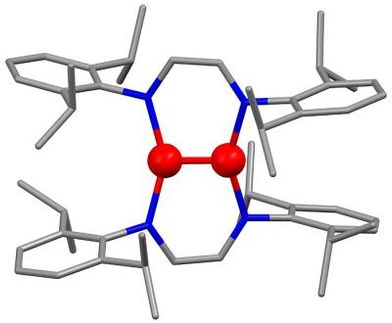Environmentally safer catalyst proves more active in hydrogen production
Advertisement
Ohio State University engineers have developed a chemical catalyst that increases hydrogen production without using a toxic metal common to other catalysts. Though the new catalyst is still in the early stages of testing, it could represent an important step toward using the nation's coal supply to power alternative fuel vehicles and equipment. The catalyst uses a combination of iron, aluminum and other metals to harvest hydrogen from carbon monoxide and water, explained Umit Ozkan, professor of chemical and biomolecular engineering at Ohio State. In tests, the catalyst performed up to 25 percent better than a commercially available alternative.
"We didn't just want to make a better catalyst, but also understand why it's better, and what we can do to make it work even better," Ozkan said.
The first step for making hydrogen from coal is a process called gasification, which converts coal to a carbon monoxide-rich stream. But the next step -- retrieving hydrogen from a reaction between carbon monoxide and water -- only works within a narrow range of low temperatures. New catalysts are needed to boost the reaction, especially for large-scale coal gasification, she said.
Until now, the most popular commercial catalyst has been one made from iron and the toxic metal chromium. During hydrogen production, the catalyst can release chromium as a byproduct. When the catalyst material has passed its useful lifetime, it requires expensive disposal methods.
Umit Ozkan and her team suspected that the chromium helps maintain the pore structure of iron during the reaction, so they looked for a metal with a similar chemical structure. That led them to aluminum, and to other complementary metals that greatly increased hydrogen production. The next thing Ozkan and her colleagues want to do is test whether their catalyst works in the presence of sulfur, since coal from Ohio and much of the American northeast is sulfur-rich.
Most read news
Topics
Organizations
Other news from the department science

Get the chemical industry in your inbox
By submitting this form you agree that LUMITOS AG will send you the newsletter(s) selected above by email. Your data will not be passed on to third parties. Your data will be stored and processed in accordance with our data protection regulations. LUMITOS may contact you by email for the purpose of advertising or market and opinion surveys. You can revoke your consent at any time without giving reasons to LUMITOS AG, Ernst-Augustin-Str. 2, 12489 Berlin, Germany or by e-mail at revoke@lumitos.com with effect for the future. In addition, each email contains a link to unsubscribe from the corresponding newsletter.































































